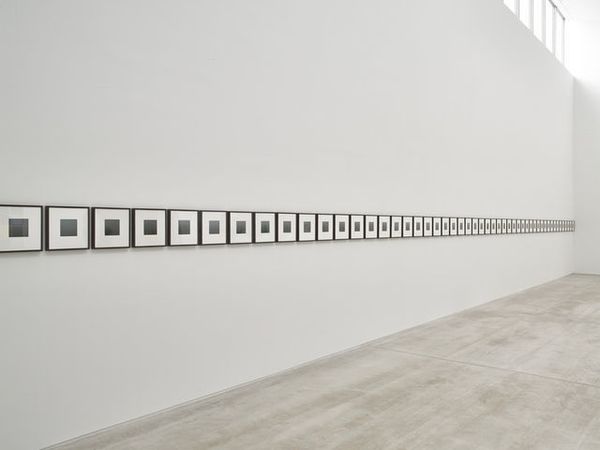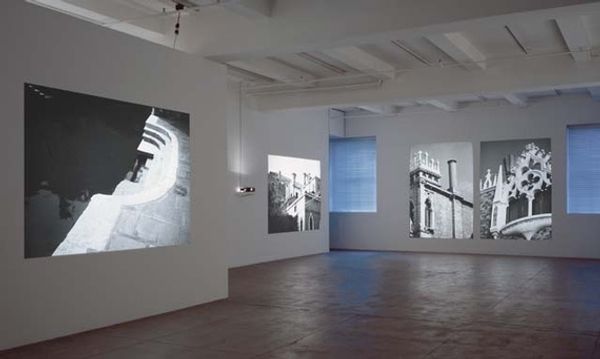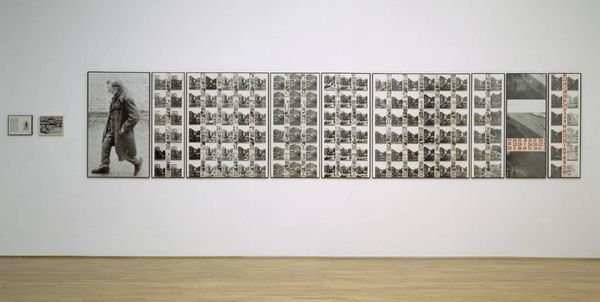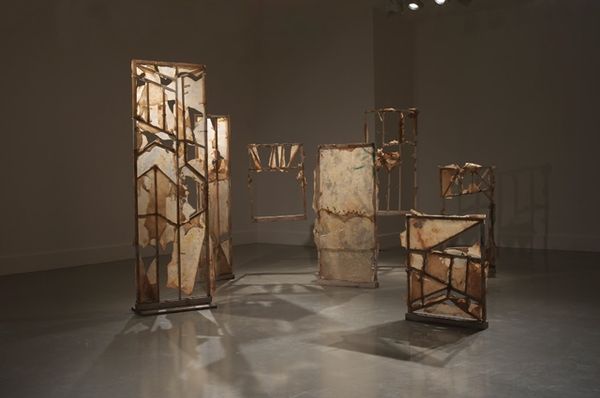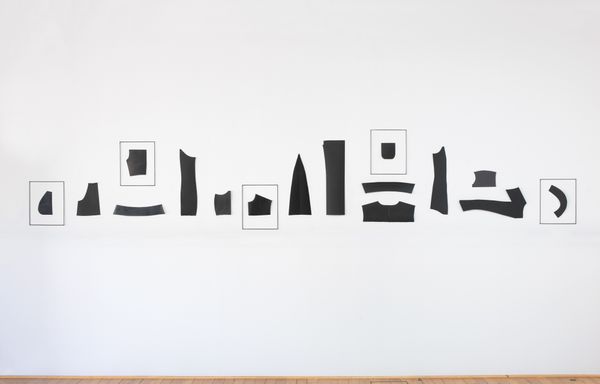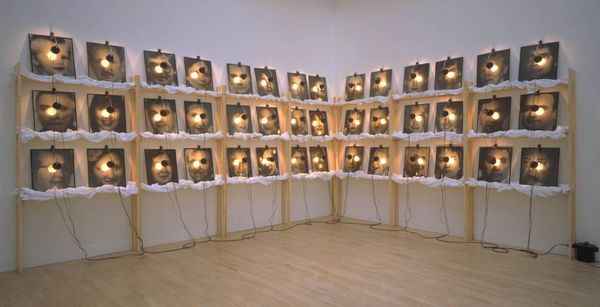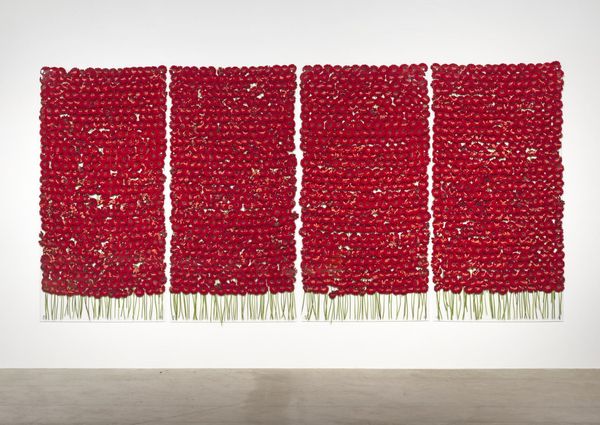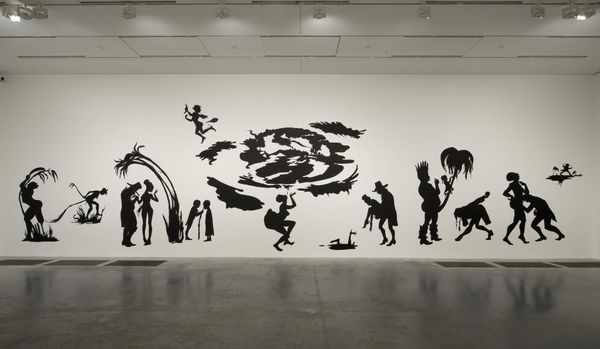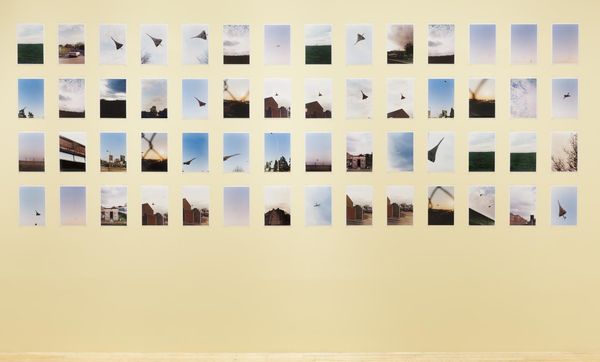
Copyright: Alfredo Jaar,Fair Use
Curator: Well, here we have Alfredo Jaar’s striking installation, "1+1+1", created in 1987. It's currently housed at the Art Institute of Chicago. My first thought? Those gilded frames disrupt my expectations in such an exciting way. Editor: It certainly grabs your attention. It’s almost theatrical with its use of light and shadow and that repetitive motif… Are those photographs above the frames? Curator: Yes, three sepia toned photographs mounted and hung above three gilded picture frames laying on the gallery floor, each internally lit. The combination of print, photography, and installation gives us a window into Jaar's material investigation. What exactly do those inverted figures portray? Editor: It seems like scenes depicting miners or workers in some capacity – though the perspective throws me. But considering this was created in 1987, and Jaar’s practice often involves responding to sociopolitical landscapes, could this installation speak to global labor issues of the time, the extraction of resources perhaps? Curator: I think you're right. Jaar uses the gallery space itself, implicating us. The mirrors literally reflect us as viewers, placing us in dialogue with the obscured or destabilized images. He draws our attention to not just *what* is depicted, but *how* it’s presented, what that golden light evokes, and what it costs to have it, no? Editor: Absolutely, it seems like Jaar is using our expectations of what belongs in a museum setting – the grand gilded frame – to critique how power and visibility are manufactured in these very institutions. I see these lightboxes not just as mediums but statements reflecting complex institutional values. Curator: And the mirrored surface! Rather than offering a clear picture, it asks us to contemplate absence and presence in this space. These materials highlight the power structures present not just within the work but within society at large, asking who and what do we truly *see.* Editor: Precisely, "1+1+1" acts as a potent commentary on the museum's role in shaping our understanding and questioning whose stories get told, by what medium, and by whose perspective. This examination of representation makes this so much more than just an image and really a call for dialogue. Curator: Exactly! Jaar pushes us beyond aesthetics and compels us to consider the socio-economic realities embedded within artistic presentation and representation. Editor: A thought-provoking piece. Thanks for sharing your perspective. Curator: The pleasure was all mine. It’s wonderful when art leads to conversations like these, illuminating shared responsibilities within historical frameworks and museum politics.
Comments
No comments
Be the first to comment and join the conversation on the ultimate creative platform.
